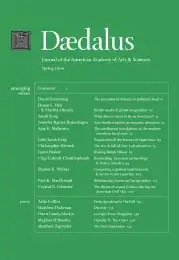The rise & fall of New Left urbanism
The pillars of the “urban renewal order,” shorthand for an interlocking set of social policies since the 1940s, were crumbling fast by the 1960s. Urban populations, especially in Western Europe, the United States, and Canada, suddenly no longer wanted the variety of once progressive-minded public programs it encompassed: highways through cities, demolitions aimed at clearing “blighted” or “gray” areas, redevelopment for public housing superblocks and other megaprojects. A slum in the eyes of a planner, it turned out, was often a resident’s cherished homestead, and soon proponents of the City of Tomorrow ran up against increasing opposition. The fall of the urban renewal order was driven from below, to be sure; but the ideology of this grassroots uprising was not clearly drawn from the traditional left or right. Yet in its wake opened a fleeting conceptual space, where the fate of urban planning and policy–even urban life in general–could be debated and reconsidered, sometimes quite radically.
Striking experiments in citizen participation, or “advocacy planning,” took root in Anglo-American urbanism in the 1960s and 1970s, often in the very neighborhoods that were threatened by “the federal bulldozer.” In districts like London’s Covent Garden, Toronto’s St. Lawrence Neighborhood, and New York’s West Village, citizens attempted to make city planning–and by extension urban life–more democratic and equitable, putting forward their own proposals to counter the sweeping urban renewal plans imposed by government or private developers. Each of the counterproposals, while not always successfully realized, experimented with alternative methods of meeting urban challenges– mobility, preservation, growth, affordability, and upgrading–and embodied the aspirations and ideals of residents who couldn’t be easily ignored. Such residents rejected the authority of supposedly impartial experts and liberal policymakers, whose pursuit of modernization in the “public interest” seemed to come at the expense of urban neighborhoods.
Ad hoc grassroots organizing proved effective in stopping highway plans, “slum” clearance proposals, and redevelopment schemes. But such victories posed a follow-up question: must popular mobilization be only reactive? In other words, couldn’t cities also be planned from the grassroots? At a time when the New Left was championing the idea that “the people with the problems are the people with the solutions,” an emergent “New Left urbanism” embodied hopes (in the end fleeting) for urban renewal with a humane face.
. . .
